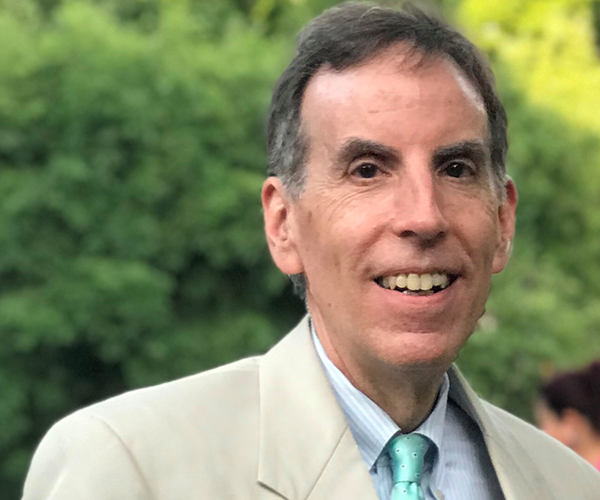News & Highlights
Topics: Clinical & Translational Research, Education & Training, Five Questions
Five Questions With . . . Paul Conlin
Our faculty lead for Harvard Catalyst's C/T Research Academy discusses his clinical applications and health services research at the VA Boston Healthcare System and his early days in a high school rock band.

Paul Conlin, MD, leads Harvard Catalyst’s two-year Clinical and Translational Research Academy. He is chief of the Medical Service at VA Boston Healthcare System and Harvard Medical School professor of medicine. He has been a practicing endocrinologist at the VA since 1986, when as a first-year clinical fellow at Brigham and Women’s Hospital, he began running the endocrinology clinic at the VA’s Brockton campus, one half day a week. Currently, his research focuses on improving patient-centered care for patients with diabetes, using information technology and health services approaches.
How have your research interests evolved over the years?
For most of my career, I have asked questions that were best answered by a clinical trial. Some of those questions were very focused on the mechanisms of disease, which satisfied my interest in understanding why things occurred or potentially how to intervene to make them better. More recently, I’ve focused questions on clinical applications and health services research. My interest in clinical trials has migrated to asking questions like, if we know that an intervention is effective, how can we best get it to our target population?
I’ve also developed an interest in data science, using the very large patient datasets at the VA to ask questions and apply advanced statistical techniques to answering them. For example, in my current research we’re applying a novel statistical analysis called instrumental variables to create the equivalent of a randomized trial. These techniques allow us to use a large sample of 400,000 patients and their experiences in our healthcare system over time to come close to addressing cause-and-effect questions. It would never be possible to conduct a clinical trial of that size.
For example, we are looking at the association between HbA1c variability and adverse outcomes in patients with diabetes. Preliminary data suggest that people who have wide fluctuations in A1c values over time are at increased risk for developing diabetes-related complications.
Why is type 2 diabetes so prevalent among the Veteran population?
About 25% of people who receive care in the VA have diabetes, compared to about 10% in the general population. Our patient population tends to be older and we care for people who are more socio-economically challenged and have more frequent mental health issues. The risk factors for diabetes are the same but as a result of the combination of age, co-morbidities, and social determinants of health, at the VA we see a population enriched with risk factors for diabetes.
“Participants in our program have about a threefold greater likelihood of getting a career development award than peers.”
How are you using technology to improve diabetes care?
I’ve done studies looking at the efficacy of diabetes care management via a web-based program, as well as web-based education for clinicians to improve their knowledge and skills in diabetes management. I’ve looked at the utility of retinal imaging cameras in primary care clinics to increase the eye exam rate in people with diabetes, which will help identify and treat diabetic retinopathy. We’ve shown that retinal photographs taken in a primary care clinic and interpreted remotely by eye professionals have results that are comparable to having a face-to-face eye exam by eye professionals. Each of these studies show that technology can be a robust alternative to traditional face-to-face care.
How does the C/T Research Academy make a difference in the careers of the fellows who participate?
Invariably, people who complete our program feel much more empowered to ask clinical research questions and develop studies to address them, to analyze the data generated, and then to develop a next-step strategy. The skill set that investigators need to be successful in today’s environment demands hands-on knowledge of a variety of things, including study design and biostatistics. Most physicians come from clinical training programs where the focus is on training clinicians, not on developing these research skills.
Our focused, didactic, and practical training program allows them to leapfrog over their peers who have not participated in this training. They emerge competitive for the next step in their research — such as obtaining a grant for career development funding. Participants in our program have about a threefold greater likelihood of getting a career development award than peers.
What do you like to do in your spare time that colleagues might be surprised to learn?
When I was in high school, I played keyboard in a rock band. Income from it funded my first two years of college. My hair was a lot longer then and my skill set was definitely better. I still play, not professionally, but for myself and my family.

